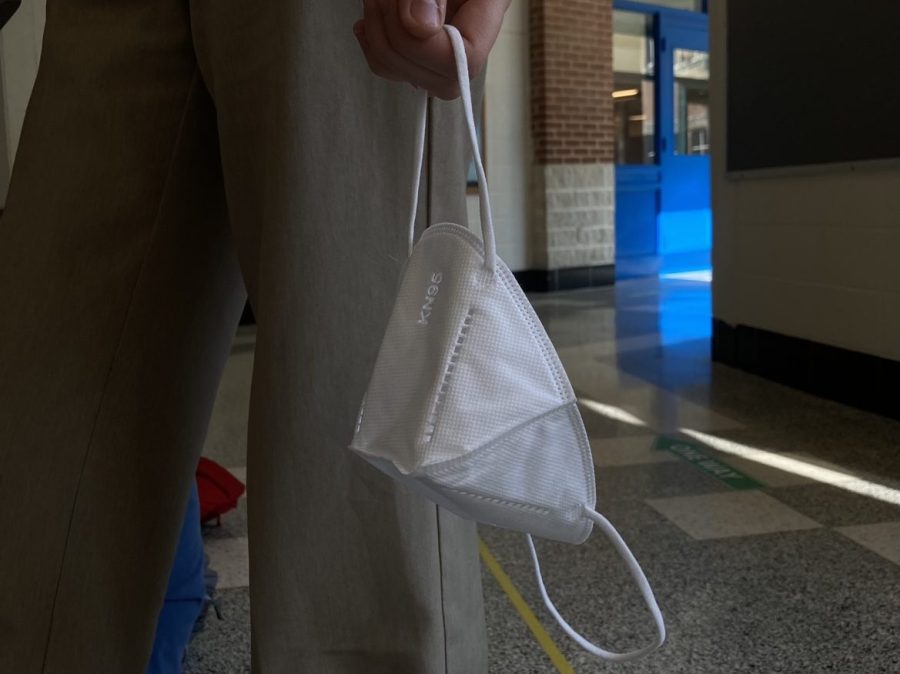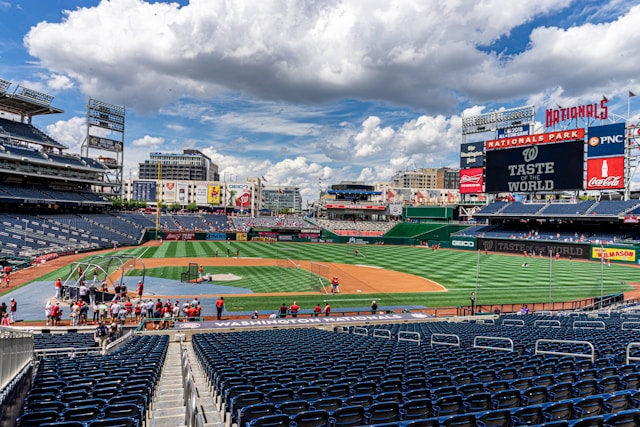MCPS’ COVID-19 policies are worse than you realize
When COVID-19 cases in Montgomery County reached a peak in January, MCPS leaders let down the community in several ways.
February 5, 2022
To sum it up in one word, MCPS leaders’ response to the recent surge in local COVID-19 cases has been a disaster.
Maryland officials first detected the omicron variant in the state in late November. The highly contagious variant quickly caused the greatest spike of COVID-19 infection in the Washington, D.C. area since the start of the pandemic. In response to the surge, MCPS leadership announced on December 20 that if at least 5% of a school’s population tested positive for the virus, the district and in conversations with the Montgomery County Department of Health and Human Services (DHHS) would determine if a school should move to virtual instruction. After students returned from winter break in early January, MCPS decided that the 11 MCPS schools that had met the threshold would move to virtual learning, effective January 4.
It took only a day for an additional 115 of MCPS’ 208 schools to reach the same threshold. By the end of the week, the county did away with the “5%” threshold. Further closures wouldn’t come for nearly two more weeks when MCPS leaders would select 16 other schools for virtual learning.
Following the lead of their peers nationwide, students organized walkouts urging MCPS to make a transition to virtual instruction districtwide for a short period. The Montgomery County Education Association, the county’s largest teachers’ union, issued a vote of no confidence in the Board of Education and interim Superintendent Monifa McKnight. An omicron-fueled bus driver shortage became so severe that MCPS leaders, to no success, asked the National Guard to fill in.
Though complaints have been loud and public, critics have yet to target some of the most baffling aspects of MCPS policy. Here are the school district’s most confusing offenses that continue to put students and staff at risk.
MCPS generally allows symptomatic individuals to end their quarantine earlier than asymptomatic individuals.
MCPS contact tracing staff designates quarantine return dates 11 days from the first sign of symptoms, rather than from the date of a positive test. Asymptomatic positive cases, meanwhile, have a return date 11 days after their positive test. A student who starts exhibiting symptoms a week before their positive test would only have to quarantine for three days, though an asymptomatic student would have to quarantine for the full 10-day period.
Students and staff who remain COVID-positive and sick enough to extend their quarantine don’t count toward active case counts.
As outlined in the MCPS dashboard definitions, if a student or staff member were out of school longer than ten days due to COVID-19, they would no longer count towards the active case count. MCPS’ data will “delete” cases automatically based solely on the expected return date, the eleventh day from the first self-reported sign of symptoms. At any time, the number of true active cases in and around a school could be much higher than what MCPS office staff report.
Different schools are receiving different masks, including unwrapped, contaminated ones.
During the first week after winter break, Whitman staff received KN95 masks made by the Shenzhen Ende Medical Technology (SEMT) company. SEMT masks have not been CDC-tested to determine if they actually filter 95% of particles, which is the production standard necessary for the KN95 designation. And here’s the kicker: the National Institute of Occupational Safety and Health (NIOSH) lists SEMT as a producer of counterfeit respirators. According to NIOSH, SEMT falsified NIOSH approval in March of 2020, claiming that their masks had been approved when in reality, the federal government had not yet tested the masks.
MCPS leaders purchased hundreds of thousands of masks from companies like SEMT that do not meet promised standards. While counterfeit masks are prevalent across the country, the least MCPS could do was vet the effectiveness of these masks.
Elsewhere in the county, the mask situation is just as confounding. Students at Montgomery Blair High School reported receiving from staff unwrapped, single KN95 masks instead of wrapped, protected ones — risky by expert standards.
The methods for defining, corroborating, and removing “false positive” claims from the data remain undisclosed to the public.
On January 10, staff in MCPS schools distributed rapid tests to students. The school district provided these rapid tests in order to mitigate inequities over access to testing materials and gather data on every student’s infection status. However, the iHealth rapid test students and staff received has a 5% false positive rate, opening the door to misreported infections.
Additionally, the MCPS dashboard notes the existence of false positives and alludes that these would warrant “deletion” of a case. However, it is unclear how much evidence MCPS requires to corroborate a report of a false positive test, or if they need evidence at all. Hypothetically, a student could test positive and have to quarantine for 10 days. Due to MCPS leadership’s vague rules, their quarantine may be able to be cut short if the student or their parent simply calls the school and erroneously reports that their child received a false positive result.
MCPS does not count unmasked lunch table groups as instances of “close contact” unless there’s a unique circumstance at a table.
MCPS defines “close contact” as someone who is within six feet of a positive case for 15 minutes or more over 24 hours, or within three feet of a COVID-positive individual during a class period. This definition sets a remarkably high bar for what constitutes close contact.
One Whitman staff member, who asked to remain anonymous, encountered the guidelines personally when he had to give an interview with administration about a possible close contact in his classroom.
“I’m not even within three feet of my wife for fifteen consecutive minutes,” he said.
When determining close contacts, schools conduct contact tracing by assessing seating charts and lunch and recess activities. Ultimately, though, when many Whitman students have been in the same classroom as a positive case, even sitting across from the person at a table, they have not received a notification about possible exposure unless there’s a specific and sustained, even closer contact.
Different schools are also handling classroom contacts differently. An email Principal Kimberly Thompson sent to Burning Tree Elementary School parents on January 14 gave testing recommendations for fifth-grade students exposed to COVID-19 in a classroom, even though there were no “close contacts” by MCPS’ definition. Meanwhile, Whitman has stopped sending these advisories.
“I had multiple classes with someone who tested positive for COVID and got no notice from the school,” said Whitman sophomore Elliot Cooper. “Thankfully, the students have done a good job of letting each other know when they test positive.”
In a bullet point, MCPS leaders reduced the timeframe they use to calculate quarantines and whether schools should move to virtual learning — from 14 days to 10.
In a community message on January 13, the district revealed new determining factors for moving a school to virtual instruction, including trends in “staff absences, unfilled substitute teacher requests, student absences, unserved bus routes, and positive case rates for students and staff over a 10-day period.” When moving the aforementioned 16 schools to virtual learning, MCPS looked at an individual school’s positive case rate over a 14-day period. The revised guidance on the number of critical days in determining the levels of the virus in a school community is vastly different from the 14-day metric the county had stood behind — yet the switch earned no added focus or highlight.
In the same message, MCPS leadership pledged to report each school’s case count even less frequently than they had been, from once a day to only once a week. Often, it was nearly impossible to calculate the true number of cases in a school due to this unclear communication.
MCPS measures open the possibility that not all active cases are out of the building.
Yes, you read that correctly. While MCPS requires students to quarantine for 10 days following a positive COVID test, the school district allows asymptomatic staff to return to school after five days, regardless if they are still contagious or if they have not tested negative since receiving their positive test.
District leaders implemented this policy to attempt to mitigate the nationwide shortage of substitute teachers. However, data from the CDC shows that all individuals with the omicron variant are still contagious until at least seven days after their positive test.
MCPS has not outlined a plan to ensure that students under quarantine due to a separate case in their household test themselves before they come back.
MCPS began to offer a virtual instruction option for students who have concerns about getting COVID at school or bringing it into the building on January 20. Record-keepers are tracking that data.
“If members of your household are sick or have tested positive for COVID-19,” MCPS COVID staff wrote to students, “you should try to stay six feet apart from them also, if possible.”
There are no requirements that these students test before returning. A student whose entire family has tested positive can still come to school if they have not yet taken a test.
The situation MCPS leaders have put staff, students, and the entire community in is not just reckless, it proves a dereliction of their duty. In times of crisis, leaders must follow a consistent plan. While MCPS leadership had every right to amend their COVID plan as they received new information from DHHS and the Maryland State Department of Education, they made an unfortunate situation worse by completely changing their guidance not once, but twice. Yes, the status of COVID-19 in the community is uncertain. McKnight and the Board of Education members are experienced professionals who have likely attempted to do their best job handling the surge. However, in any future situation where district leadership is required to execute a plan, they must exhibit clearer communication, consistency on key issues, and transparency in all correspondence with the community.
MCPS must do better.












abigail meyers • Feb 8, 2022 at 12:37 pm
i’m not even an mcps student (carroll county), but as a high school student and maryland resident MCPS’s covid “policies” anger me
H.R. McMasters • Feb 7, 2022 at 2:28 pm
This article reads too much like a rant and is missing many quotes and attributions that I think are needed to legitimize the points made. I expect a higher degree of professionalism from the Black & White.